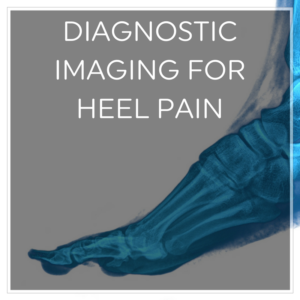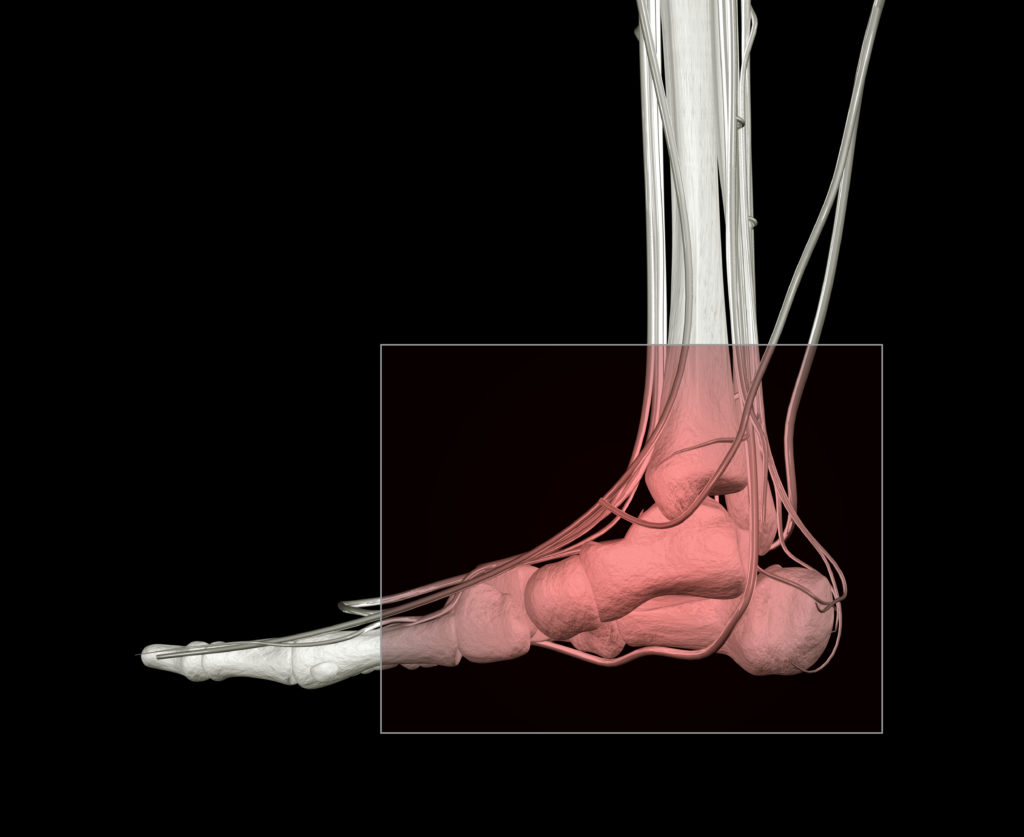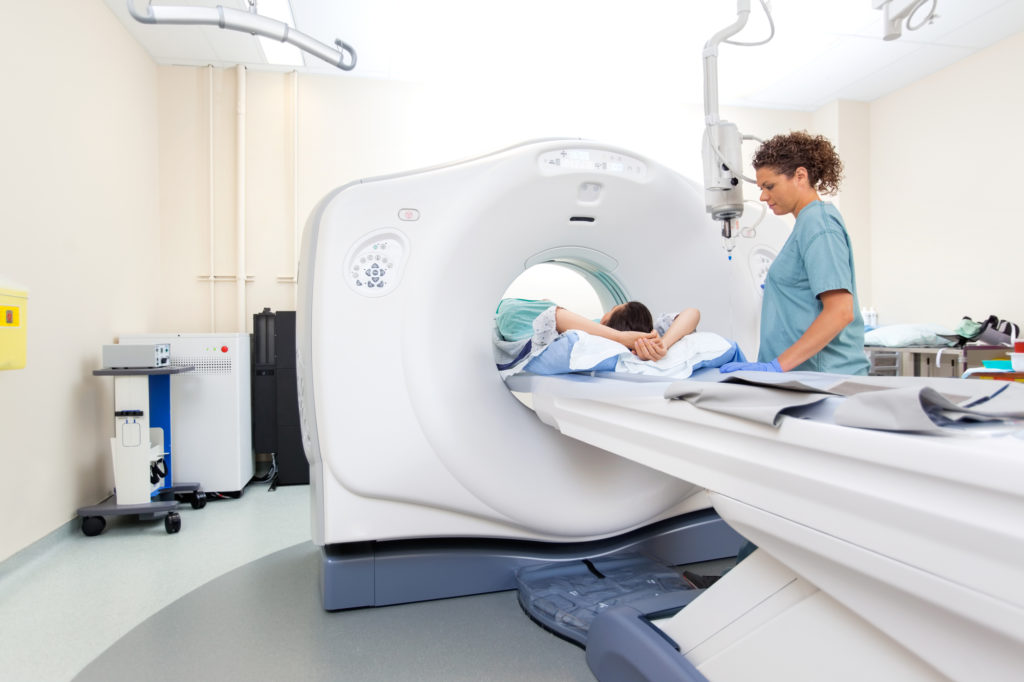 Diagnostic imaging can be an invaluable tool for treating and diagnosing heel pain, allowing doctors and healthcare providers a literal look beneath the surface.
Diagnostic imaging can be an invaluable tool for treating and diagnosing heel pain, allowing doctors and healthcare providers a literal look beneath the surface.
What are the different types of imaging commonly used for Plantar Fasciitis and heel pain? When is diagnostic imaging needed? And what can you expect from imaging in terms of cost and experience?
This blog post will answer common questions and help you make a more informed decision about diagnostic imaging with your healthcare provider.
When Is Diagnostic Imaging Needed?
If you’re dealing with Plantar Fasciitis or heel pain for the first time, your doctor isn’t likely to recommend an X-ray or MRI. A review of your health history, lifestyle, and a physical exam can usually provide your doctor with everything he or she needs to know for a diagnosis.
In general, diagnostic imaging is used for Plantar Fasciitis and heel pain in two common situations:
Stubborn or Chronic Plantar Fasciitis
While an amazing 90% of Plantar Fasciitis cases respond well to conservative treatment methods, the remaining 10% can be very stubborn or chronic. In this case, your doctor may use diagnostic imaging to take a closer look at the mechanics of your foot, to determine why your heel pain is resistant to treatment, and how to move forward.
Ruling Out Other Conditions
Several foot conditions can masquerade as Plantar Fasciitis. Depending on your symptoms and medical exam, your doctor may decide that diagnostic imaging is needed to rule out tendonitis, bursitis, a stress fracture, a plantar fascia tear or rupture, nerve entrapment, tarsal tunnel syndrome, and so forth.
Plantar Fasciitis that has a very sudden or dramatic onset, is accompanied by pain that doesn’t respond to conservative treatments, or gets worse with conservative treatments is likely to result in diagnostic imaging.
Types of Imaging Used for Heel Pain
If you have recalcitrant Plantar Fasciitis (heel pain that just won’t go away), or your doctor suspects that your heel pain may be something other than Plantar Fasciitis, he or she may recommend one or more of the following imaging options.
If your doctor recommends imaging that you feel is unnecessary, or prior to trying conservative treatment methods, don’t be afraid to get a second opinion or ask more questions! Knowing what types of imaging are available–and what each type of imaging can accomplish–will help you be an effective advocate for your health.
Ultrasound (Sonography)
A diagnostic ultrasound, also called a sonogram, is a quick and easy imaging method used to take a look at soft tissues in the foot (not to be confused with Ultrasound Therapy for treating Plantar Fasciitis). This imaging tool can rule out soft-tissue conditions like tendonitis, tarsal tunnel, nerve compression, and plantar fibromatosis.
Ultrasound can also show whether or not the fatty heel pad looks normal, and whether the plantar fascia is thicker than normal (thicker than 4 mm), flattening, deteriorating, or compromised by micro-injuries and small tears.
X-Ray (Radiograph)

X-rays aren’t typically used to diagnose Plantar Fasciitis, since they don’t offer a good look at soft tissues. They can, however, be very valuable in ruling out or confirming a stress fracture.
X-rays can also be used to look for heel spurs or bone spurs on the foot that are digging into the fatty pad of the heel and causing pain, evidence of arthritis, or problems with alignment in the foot.
MRI (Magnetic Resonance Imaging)
An MRI uses a magnetic field combined with radio waves to provide detailed cross-section images of bones, tendons, and soft tissues. Unlike an X-ray or ultrasound, MRIs can take up to an hour, and require the patient to remain very still.
MRIs can pinpoint plantar tears or ruptures, tendon injuries, lesions, cysts, and sometimes fractures or heel spurs, without the radiation and expense of a CT-scan. MRIs are also sometimes used to confirm Haglund’s Deformity and Achilles tendonitis.
CAT-Scan (CT Scan)
A CT scan or CAT scan is a special type of X-ray with the ability to capture a detailed cross-section of your foot, including soft tissue and bones. However, CT scans aren’t typically used to diagnose or treat Plantar Fasciitis unless your doctor is concerned about tumors on the heel or calcaneus.
CT scans are more expensive, expose patients to a small amount of radiation, and generally do not provide more information than an MRI or X-ray for Plantar Fasciitis or other conditions that cause heel pain.
What to Expect from Imaging for Heel Pain

Knowing what you can expect from imaging will help you feel prepared, and may also help you make a decision about whether a particular kind of imaging is right for you.
What Does Imaging Feel Like?
All of the types of imaging covered in this blog post are painless. However, it’s important to understand that some types of imaging may still cause stress or discomfort because of the equipment, positioning, and time required for successful images.
Ultrasound and X-ray are the quickest and easiest forms of imaging. Both of these tools take just a few minutes.
A CT-scan usually takes 5-20 minutes, and requires patients to place the foot and leg into a narrow tube. Since CT-scans emit a small dose of radiation, they usually aren’t recommended for children, or pregnant women.
MRI scans take the longest, which can sometimes cause discomfort from laying on the hard table. The process can take between 30-60 minutes, and it’s important to stay very still. The machine makes loud knocking sounds while it works, which can be unsettling for some patients, and it may not be recommended for patients with tattoos, pacemakers, or metal screws or plates in the foot and leg.
Cost of Imaging
The cost of imaging for Plantar Fasciitis can vary quite a bit, depending on your insurance coverage and whether you get the imaging done in a doctor’s office or a hospital. Don’t be afraid to call ahead and ask about costs and discounts for same-day payment. If you can, verify whether your provider and the procedure is covered by your insurance before you havre the imaging done.
In general, imaging done in a doctor’s office will be less expensive than imaging done at a hospital. Ultrasound and X-rays are usually the least expensive imaging options, followed by MRI and CT-scans.
Remember, if this is your first experience with heel pain or Plantar Fasciitis or heel pain, imaging usually won’t be needed.
Resting your feet, icing, stretching, and supporting your arch with orthotic insoles helps most people heal within a few weeks to a few months. However, if you or your doctor don’t see results with conservative treatment, or you suspect your heel pain may be something other than Plantar Fasciitis, imaging can be an invaluable tool in making a correct diagnosis.



